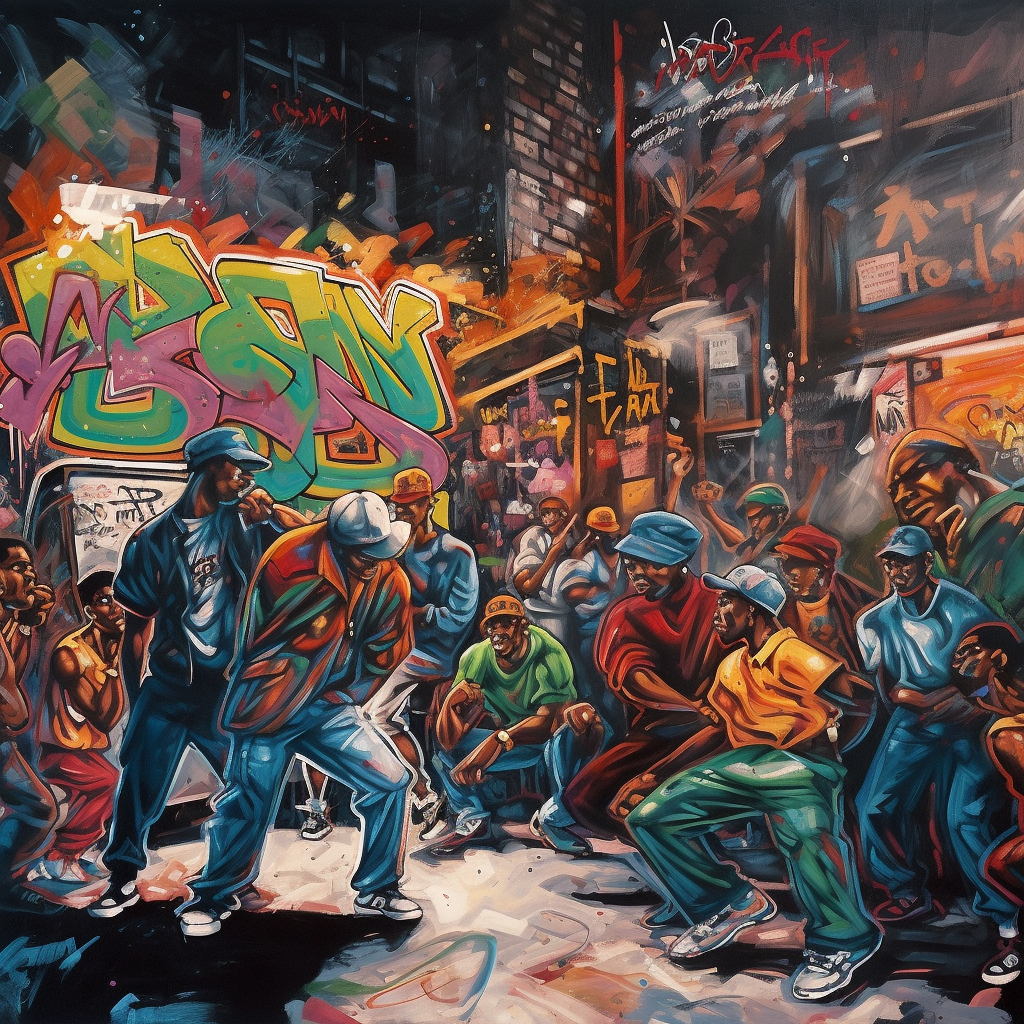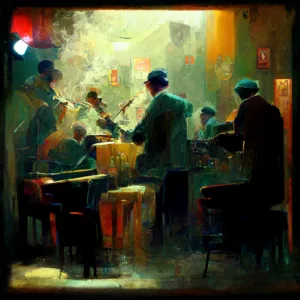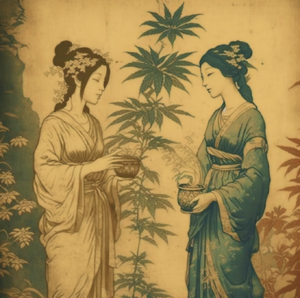Hip-hop and cannabis have a longstanding relationship that has been a part of the genre’s identity since its inception.
From the early days of block parties and freestyle battles to the current era of trap music and social media influencers, cannabis has been a consistent theme in hip-hop music and culture. But what is the history of this relationship, and how has it influenced the music, culture, and artists?
In this article, we’ll take a deep dive into the roots of hip-hop and cannabis, from the influence of the Rastafarian movement to the rise of gangsta rap and weed culture in the 90s. We’ll explore the shift towards more positive portrayals of cannabis use in modern hip-hop and the rise of cannabis brands owned by hip-hop artists. And we’ll examine how both hip-hop and cannabis have been stigmatized and criminalized, and how hip-hop artists are using their platform to advocate for social justice and equity.
It’s clear that the relationship between hip-hop and cannabis is not just about music and culture. It’s about the social and racial inequities caused by the war on drugs and the role that hip-hop artists are playing in advocating for change. So let’s dive in and explore this fascinating and complex relationship between two cultural touchstones.
The Roots of Hip-Hop: Cannabis in Early Hip-Hop Culture
When we think of hip-hop culture, it’s easy to picture the bling, the flashy cars, and the baggy clothes. But the truth is, hip-hop has a rich history that dates back to the 1970s, and cannabis played a significant role in its early days.
Reggae and its connection to the Rastafarian movement played a significant role in the development of hip-hop culture. Jamaica’s musical technology of dubbing and toasting was instrumental in influencing the techniques of emceeing and scratching in America.
The sound system, which was a popular form of entertainment in Jamaica, also became a centerpiece in urban areas of America. These sound systems, also known as block parties, became the battlegrounds where youth could showcase their rap skills. Cannabis was often present at these gatherings, and artists would consume it to help them get into the zone before performing.
Cannabis had a significant influence on the early hip-hop scene through the Rastafarian movement. Rastafarianism is a religious and cultural movement that originated in Jamaica and among its most prominent followers are Bob Marley, Peter Tosh, and Bunny Wailer. Rastafarians also believe that cannabis is a sacrament that helps to connect them to their spiritual roots.
The influence of the Rastafarian movement and reggae on early hip-hop artists is wide spread from Grandmaster Flash, The Notorious B.I.G., and so many more.
The 90s: The Golden Age of Hip-Hop and the Rise of Weed Culture
The 90s were the golden age of hip-hop, with the emergence of gangsta rap, the rise of weed culture, and the release of one of the most influential hip-hop albums of all time: “The Chronic” by Snoop Dogg and Dr. Dre.
“The Chronic” album not only featured classic tracks like “Nuthin’ But A G Thang,” but it also helped to further destigmatize the use of cannabis in the music industry. The album’s cover art prominently features a cannabis leaf, and many of the songs reference weed in some way. This album became a cultural touchstone, solidifying the intersection of gangsta rap and cannabis.
Gangsta rap emerged in the late 80s and early 90s, with artists like N.W.A, Ice-T, and Geto Boys using their music to depict the harsh realities of life in inner-city America. Cannabis became a prominent theme in gangsta rap, with artists using it as a way to cope with the harsh realities of their lives. These artists portrayed weed as a symbol of rebellion and resistance against the system that continued to marginalize them.
As weed culture continued to rise in the 90s, so did its influence on hip-hop fashion. The iconic “stoner” look, which included baggy clothing, baseball caps, and gold jewelry, became synonymous with hip-hop culture. Artists like Cypress Hill and Redman also became known for their love of weed, and their music helped to further mainstream its use.
The 90s were a pivotal moment in the history of hip-hop and weed culture. As we continue to explore the relationship between cannabis and hip-hop, it’s essential to understand the impact the 90s played in shaping this cultural connection.
The 2000s and Beyond: Cannabis in Modern Hip-Hop
As hip-hop culture entered the 2000s, there was a noticeable shift towards more positive portrayals of cannabis use in music. Artists began using weed as a symbol of creativity, freedom, and self-expression. Cannabis became less of a rebellious statement and more of a lifestyle choice.
This shift in perception towards cannabis was also reflected in the music. Artists like Wiz Khalifa, Curren$y, and Kid Cudi openly celebrated their love of weed in their music, helping to further destigmatize its use. Their music often depicted weed as a way to cope with stress, anxiety, and depression, rather than as a symbol of rebellion.
The influence of cannabis on hip-hop sub-genres like trap and mumble rap cannot be understated. These sub-genres have embraced the use of cannabis as part of their culture and identity, with many artists celebrating their love of weed in their music. Trap music, in particular, has been heavily influenced by weed culture, with many of its biggest stars, such as Future and 2 Chainz, being vocal about their love of weed.
The rise of cannabis brands owned by hip-hop artists has also become a significant trend in modern hip-hop culture. Artists like Berner, The Game, and Jay-Z have all launched their own cannabis brands, offering a range of products from flower to edibles. These artists have used their platform to not only create successful enterprises but also advocate for cannabis legalization and social equity.
The shift towards more positive portrayals of cannabis use in hip-hop music and the rise of cannabis brands owned by hip-hop artists are just a few examples of how cannabis has become a part of the genre’s identity. As hip-hop culture continues to evolve, it’s clear that cannabis will remain a significant cultural touchstone.
Hip-Hop and Cannabis: A Shared Culture
Despite the long-standing relationship between hip-hop and cannabis, both have also been stigmatized and criminalized. The war on drugs, which began in the 1970s, disproportionately targeted communities of color and led to the mass incarceration of black and brown people for nonviolent drug offenses. This had a profound impact on the hip-hop community, which has historically been made up of artists from these same communities.
Hip-hop artists have used their music and platform to push back against this criminalization and advocate for cannabis legalization and social justice. From the early days of hip-hop, artists like Public Enemy and KRS-One used their music to highlight the impact of the war on drugs on communities of color.

In recent years, artists like Killer Mike and Jay-Z have become vocal advocates for cannabis legalization and social equity. Jay-Z, in particular, has used his platform to not only launch his own cannabis brand but also create a fund to support minority-owned cannabis businesses.
The intersection of hip-hop and cannabis has also created a unique opportunity to address the social and racial inequities caused by the war on drugs. Many states that have legalized cannabis have included provisions to address these inequities, such as expungement of prior cannabis-related convictions and priority licensing for minority-owned businesses.
So, it’s clear that the relationship between hip-hop and cannabis is not just about music and culture; it’s about social justice and equity. From the early days of hip-hop to the present day, artists have used their platform to advocate for cannabis legalization and address the racial inequities caused by the war on drugs. It’s a reminder that even something as seemingly simple as smoking a joint can have a profound impact on our society, and that we all have a role to play in creating a more just and equitable world.
Did You Know?
Rollin’ down the street, smokin’ indo, sippin’ on gin and juice
Laid back
Next week let’s get some indo inspiration and talk about the endo…
The endocannabinoid system, that is. This critical part of your body’s central nervous system helps to regulate your mood, appetite, sleep, and so much more.
So grab your gin and juice, and let’s roll…






